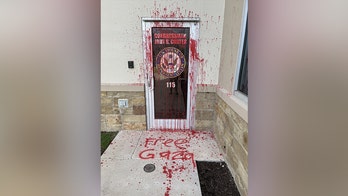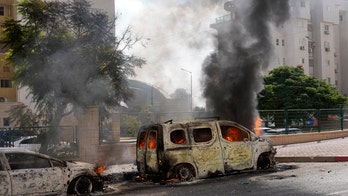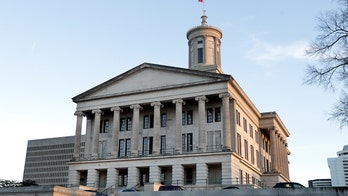Key lawmakers to see classified documents on Libya attack
Catherine Herridge reports from Washington, D.C.
The Pentagon on Friday acknowledged that it took almost 22 hours from the start of the Libya consulate attack for the closest American Special Operations response team to arrive at a staging base in southern Italy.
While officials insisted that the military did not have armed aircraft that could have responded in time to rescue Americans fighting off the terrorist attackers, the revelation raises questions about whether the team of at least 30 special operators could have been there, or off the coast of Libya, at an earlier hour.
It was "not feasible" to have an armed aircraft there in time, a senior defense official told reporters in a briefing where the Defense Department released its own timeline of events.
But critics of the military response have said the Pentagon could have at least tried to scramble F-16's from Aviano Air Base in Northern Italy.
Further, the special ops team, known as a Commanders in Extremis Force, or CIF, appeared to take an unusually long time to travel to Italy.
The team left on a modified C-130 aircraft from Croatia and was directed to head straight to Sigonella air base in Italy -- rather than to Benghazi.
The final attack on the CIA annex, which killed Americans Glen Doherty and Tyrone Woods, occurred at 5:15 a.m. local time on Wednesday.
The senior official said the CIF landed at Sigonella at 7:57 p.m. Libya time later that day -- but he would not say when the aircraft left central Europe.
According to the Pentagon's timeline of events, Defense Secretary Leon Panetta gave verbal approval for the CIF team to "prepare to deploy" somewhere between midnight and 2 a.m. Libya time. That means it took the CIF a minimum of 18 hours to go from Croatia to Sigonella. For some perspective, Sigonella is closer to Croatia than Benghazi and the distance between Croatia and Benghazi is roughly the same as Washington D.C. to Miami, Florida -- about 900 miles.
It's also important to note that AFRICOM only gave the order to deploy a C-17 in Germany to rescue surviving Americans at 6:05 a.m. on Sep. 12, Libya time, almost an hour after the final attack.
That aircraft departed Tripoli with the remains of Ambassador Chris Stevens and the three other Americans killed, at 7:17 p.m. that same day. That was almost 24 hours after the attack began.
The Pentagon did manage to scramble two unarmed unmanned surveillance aircraft, the first of which arrived about 90 minutes after the attack started.
The military's release of its timeline follows detailed accounts by both the State Department and the CIA.
Intelligence officials last week said the first call that the consulate was under attack came into the nearby annex at around 9:40 p.m. local time. (That lines up with when the military says the attack began). They said a team of additional security personnel did land at the Benghazi airport in the early morning hours. The team had to negotiate for transport into town, though, according to officials, and did not arrive at the annex until 5:15 a.m., around when the final attack occurred.





